The world of Japanese swordmaking dazzles newcomers like a Vegas casino—all gleam and no context about the machinery behind it. The katana, that curved slice of metallurgical perfection, isn’t just a weapon—it’s a fevered hallucination of craftsmanship that makes modern manufacturing look like kids playing with Easy-Bake Ovens. Dating back to the Heian period, these blades have been fetishized by collectors, mythologized in cinema, and misunderstood by practically everyone. The four-step creation process—smelting, folding, quenching, and polishing—reads like the world’s most hardcore cookbook. Imagine your sourdough starter requires patience? Try hammering hot metal for days until it transforms into something extraordinary.
The Tatara Method of Smelting
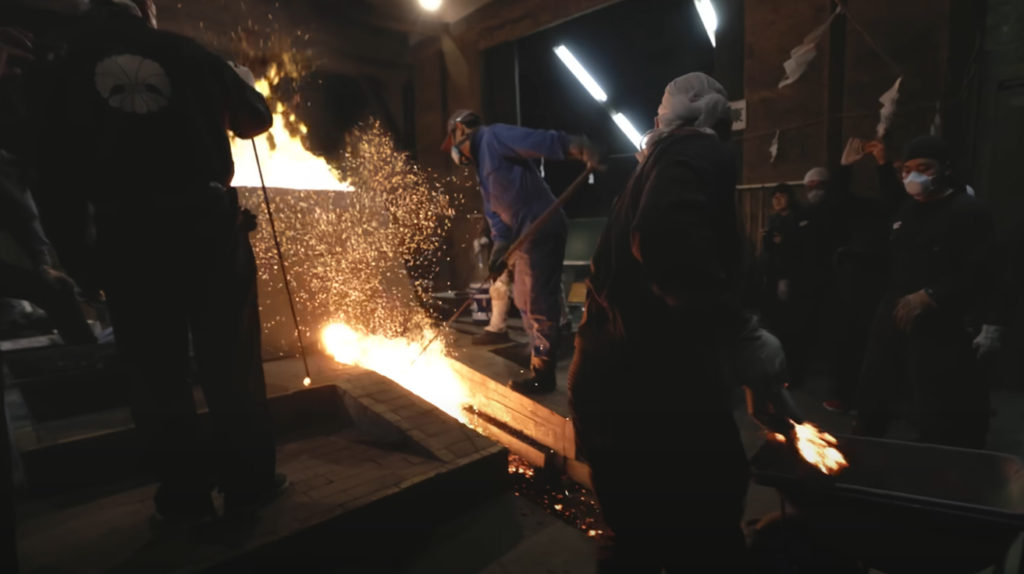
The tatara furnace in Shimane Prefecture stands like a primitive monument to pyromania, operated by craftsmen who make your local artisanal coffee roaster look like a drive-thru barista. These clay behemoths reach 4 meters high—about the height of a giraffe with ambitions—fired up just once a year in a ritual that’s equal parts metallurgy and madness. The furnace devours 614 kilograms of iron sand and 670 kilograms of charcoal, belching heat at 1500 degrees Celsius, hot enough to make Satan adjust his collar.
After this volcanic tantrum subsides, what emerges is a 100-kilogram chunk of potential. Only one-third of this scorched mass is deemed worthy of becoming swords, a selection process more exclusive than Harvard admissions. The rest gets relegated to farm tools and other pedestrian implements, the participation trophies of the metal world. This rarity isn’t just marketing hype—it’s the brutal reality of excellence in a culture that never got the memo about planned obsolescence.
Folding the Steel
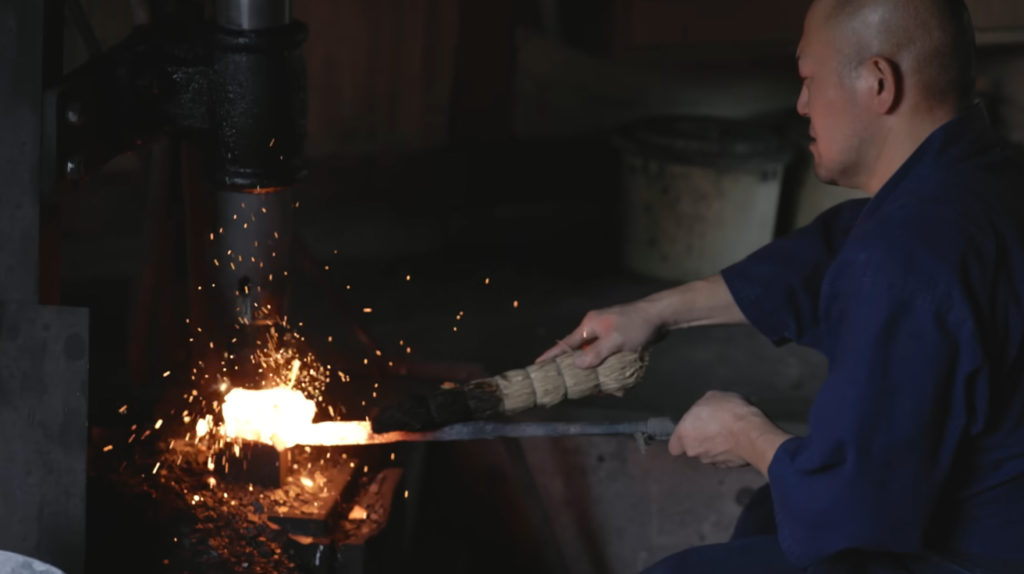
The folding process transforms swordsmiths from metalworkers into something between scientists and sadists. They smash the tamahagane into fragments, scrutinizing each piece similar to gemologists having existential crises. Carbon content becomes their obsession, the sword-world equivalent of counting macros. The smith sorts these fragments by carbon level before subjecting them to a repetitive trauma that would make Sisyphus wince.
Most blades undergo 10 to 13 folds, creating thousands of internal layers. Watching a smith during this process—eyes locked on subtle color shifts in the metal, body perpetually tensed for the next hammer strike—reveals why apprenticeships last decades, not semesters. Each fold homogenizes carbon distribution with the precision of a molecular DJ mixing tracks, alternating hard and soft layers into a steel composition that’s both razor-sharp and surprisingly flexible. The resulting patterns aren’t just pretty—they’re structural fingerprints revealing the blade’s entire life story to those who know how to read them, comparable to a metal therapist interpreting steel dreams.
Quenching and Tempering
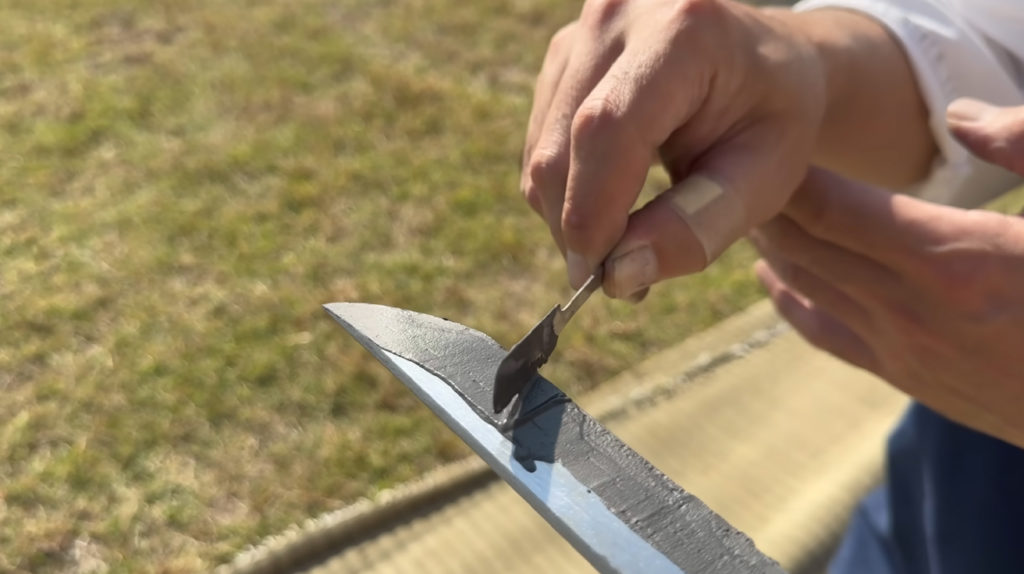
The quenching process resembles that moment in every horror movie when someone goes down to the basement alone—a point of no return where everything can go spectacularly wrong. After hundreds of hours of preparation, smiths coat blades with clay—thicker on the spine, thinner at the edge—creating patterns as distinctive as tattoos and just as permanent. The ritual purifications that precede the plunge seem less superstitious when considering that one-third of blades shatter during quenching, a failure rate that would bankrupt any modern business.
This isn’t just dramatic flair—it’s molecular transformation happening in real time. The edge, with less clay insulation, cools rapidly to form martensite crystals harder than calcified grudges, while the spine cools slowly, maintaining flexibility. The visible boundary between these regions—the hamon—becomes the blade’s signature, the metallurgical equivalent of a celebrity autograph. Surviving blades undergo tempering, a gentler reheating that prevents them from being too brittle for battle. It’s sending your blade to therapy after the trauma of quenching—just enough heat to relax the crystal structure without losing its edge. The duration varies based on intended use, with longer sessions producing blades more willing to bend without breaking, a lesson in resilience that extends beyond metallurgy.
Polishing and Sharpening
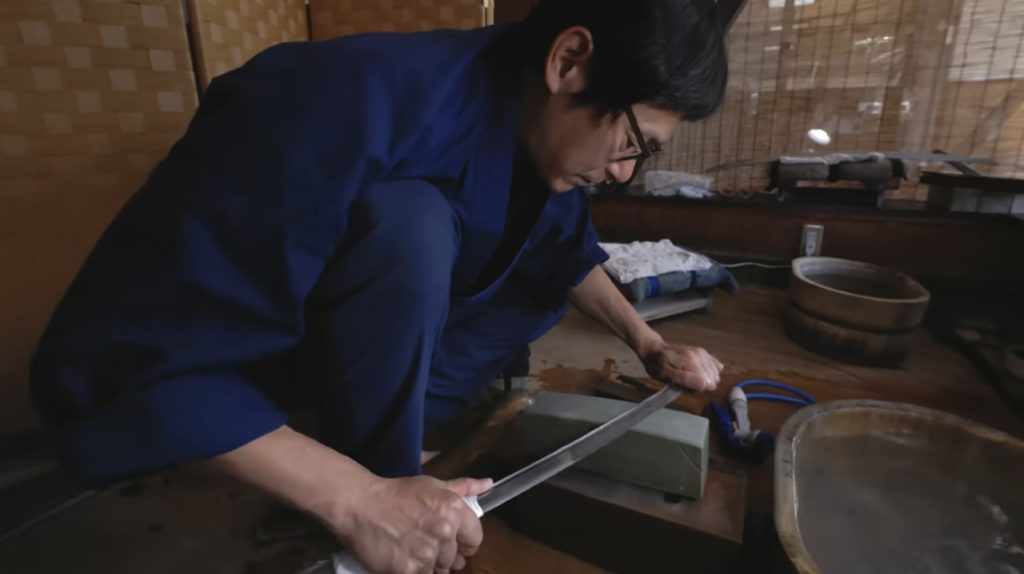
The polishing process reveals how Japanese culture has elevated extreme specialization to an art form. Togishi—sword polishers—train for decades in what most would consider a sub-specialty, spending their lives mastering what the uninitiated might mistake for glorified sandpapering. They approach rough-forged blades with the reverence of archaeologists unearthing forgotten civilizations, gradually revealing what lies beneath through a progression of increasingly fine stones.
A single blade might monopolize a month of a polisher’s life, demanding concentration that would make brain surgeons seem distractible. One careless moment can destroy the visible hamon or create scratches that reduce a masterpiece to mediocrity. The process moves through at least eight distinct stages—akin to a bizarre skincare routine for metal—ultimately transforming the sword from promising teenager to full-blown superstar. The polisher coaxes light-capturing properties from steel that seems to defy physics, revealing crystalline patterns that dance beneath the surface. The difference becomes striking—turning what was once a raw creation into something transcendent, the metal equivalent of transforming home footage into an IMAX experience.
Modern Applications of Ancient Techniques
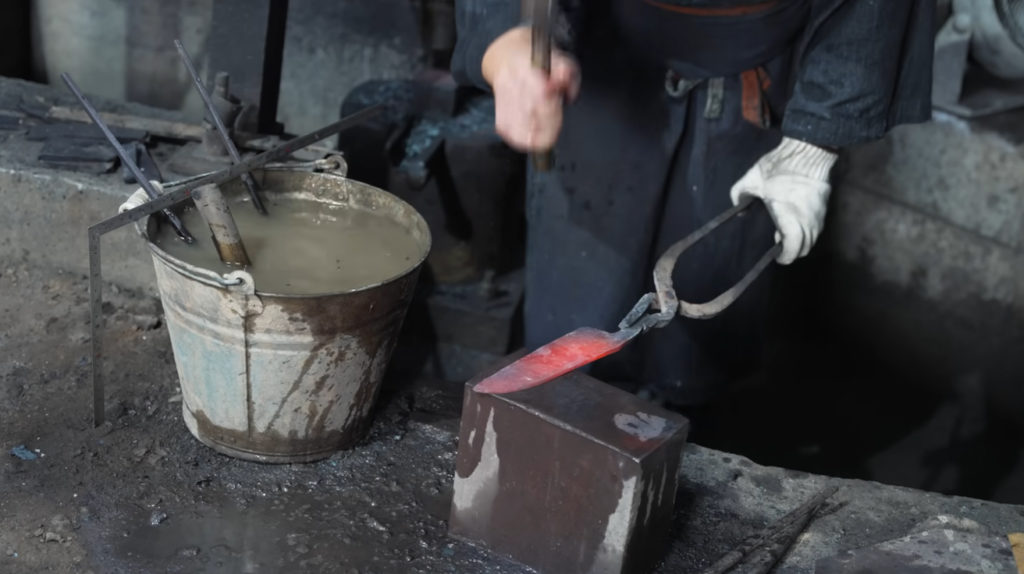
Modern manufacturing executives circle these ancient techniques resembling tech bros around a blockchain seminar—convinced there’s something valuable but unsure how to monetize it without destroying its essence. Today’s high-end knives, surgical tools, and industrial cutting implements borrow principles from katana fabrication while ditching the spiritual baggage and sixteen-hour workdays. It’s cultural appropriation of the most literal kind—stealing techniques developed through centuries of isolated refinement.
Science has finally caught up to what Japanese smiths intuited through trial and error. Electron microscopy now confirms why folded steel creates ideal carbon distribution, while materials engineers run computer simulations explaining differential hardening’s effectiveness. It’s using NASA equipment to analyze why grandma’s cookies taste better than packaged ones—the answer was always in the process, not the theory. Meanwhile, a dwindling cadre of certified swordsmiths in Japan maintains these traditions like living museum exhibits. They’re simultaneously historical preservationists and performance artists, creating functional weapons using techniques that predate electricity while surrounded by a world obsessed with the next iPhone. There’s something beautifully resistant about this persistence—a refusal to admit that newer always means better, especially when it comes to creating objects of enduring excellence.




























